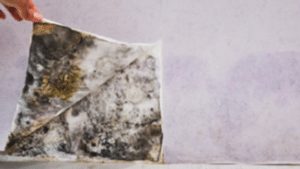
Owning a property in NJ’s Gold Coast area is highly desirable for many reasons. Apart from offering a beautiful view, this area is also home to a thriving dining and entertainment scene. Plus, it’s just minutes away from Manhattan.
As desirable as this community is, there is one major concern for all residents. Ask anyone who owns a home or property along the Hudson waterfront what their biggest concern is and odds are they’ll answer “flood damage”. Anytime severe weather is forecast, waterfront residents have to worry about the possibilities of flood and water damage impacting their everyday lives and livelihoods.
While these weather-related threats are always on top of mind, they’re not the only catalyst for water damage. Unfortunately, properties can experience water-damage emergencies from a variety of causes, including faulty appliances, clogged rain gutters and spouts, and malfunctioning sump pumps.
However, there is one particular flood- and water-damage problem that no one wants to experience: a sewage back-up.
While most property owners never want to think about such a thing, sewage back-ups are fairly common. Why? In the following article, we’ll explain the causes of this messy (and dangerous) flood-damage concern.
Sewage Back-Ups Caused By Clogs
Of all the sewage back-up causes, this one is often the most common. Like any pipe, sewer lines can be easily clogged. A clogged sewer line causes sewage back-ups that can damage properties and put the health of its occupants, visitors or neighbors at risk.
These types of clogs may be due to a large foreign object being dropped down a drain or accidentally flushed down a toilet (this happens frequently in households with young children). Sewer line clogs are also caused by small things that accumulate over time and become major obstacles (such as hair, coffee grounds, or cooking grease/fats/oils).
However, in recent years, one of the most common causes of clogged sewer lines is the use of “flushable” cleaning products. Despite what the manufacturer claims, these types of cleaning products are doing more harm than good. They do not disintegrate as promised and will block sewer lines.
Sewage Back-Ups Caused By Broken Sewer Lines
If a home or property is older, then odds are the sewer lines are just as old, too. Old sewer lines that are made from clay, iron or cement pipes are more susceptible to cracks and breaks. When this happens, a sewage back-up is inevitable. Plastic sewer lines are now industry standard for newer homes and buildings. These lines are more durable and less susceptible to the cracks and breaks that are more common with older lines.
Sewage Back-Ups Caused By Tree Roots
It may sound odd, but those big beautiful trees that many property owners love may actually be the root of a sewage back-up. How? Trees need water to thrive so their roots look for any source of moisture they can find. Recognizing sewer lines as a source of water, these roots may find a way into the pipes. Although they often start out small, these tiny roots grow over time. As they grow, they’ll wrap themselves around the sewer line and the pressure creates cracks and breaks which leads to sewage back-ups and flooding.
What To Do If Sewage Backs Up?
While preventive measures can be taken to avoid some of the scenarios above, they won’t entirely safeguard a property from sewage back-up flooding.
If your property experiences sewage back-up flooding or water damage, FloodCo USA is ready to help. Our IICRC certified water removal and flood damage restoration experts will help remove this hazardous sewage water from your home or building to help minimize health risks and property damage.
Contact us today to learn how we can help save your property from sewage back-up flooding and water damage!



